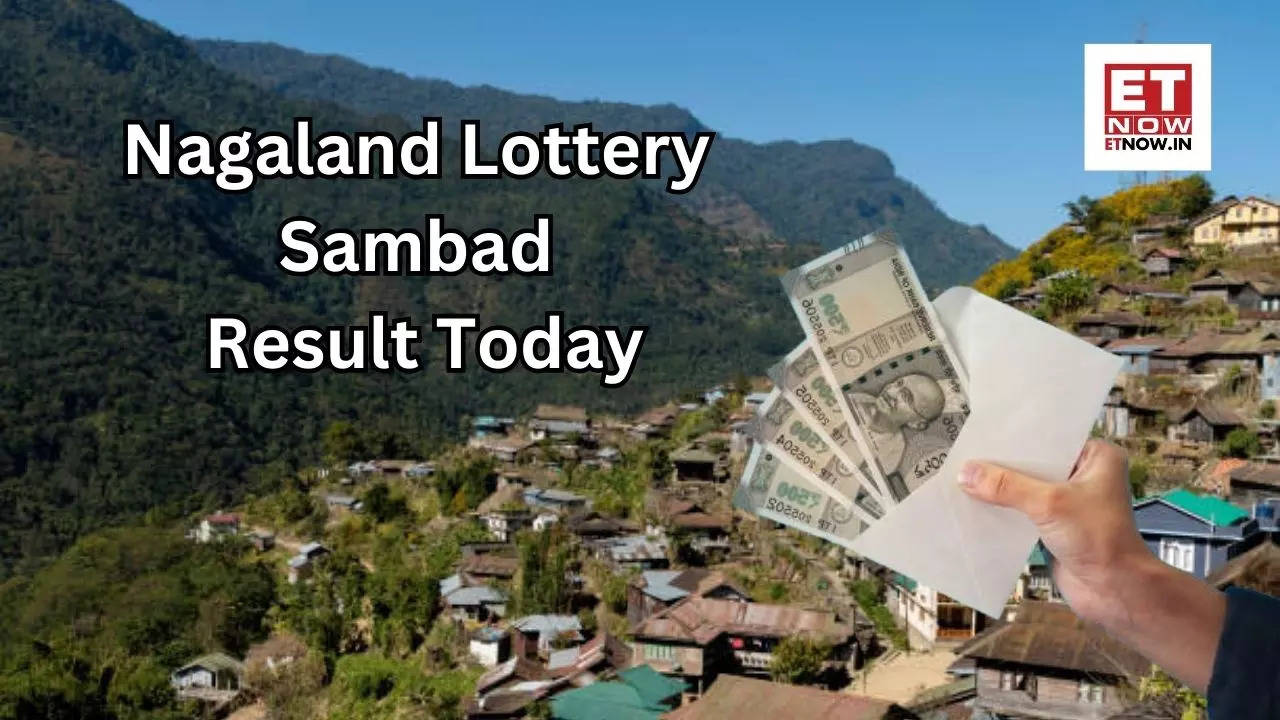Infra
Raves, weddings, and field trips: GTA residents share memories of shuttered Ontario Science Centre

A rave at the Ontario Science Centre was the place where Greg LeBlanc says his relationship first began with his husband Mark in 1997.
The semi-annual events, which were a short-lived novelty for the family-oriented museum, drew massive crowds, LeBlanc told CP24.com.
“I think it would bring in about 1,000 people or so,” he said.
At that time, he said it was now-mayor Olivia Chow, who served as a city councillor between 1992 and 2005, leading the charge to bring raves into more safe spaces.
“The science centre was really trying to find ways to program new sorts of events that were maybe for different people other than young families or children,” LeBlanc said.
“I think that was just a revenue stream that they were looking for but also in Toronto in the late nineties, there were a lot of sort of underground raves that were not legal… so that really was the beginning of rave or party culture and sort of club kids being brought into sanctioned, policed places in public.”
In the fall of 1997, he said he was out celebrating a friend’s birthday at a downtown nightclub when he met his husband, who worked as a bouncer at the bar.
“It was sort of a chance meeting,” he said, adding that the upcoming science centre rave came up in conversation.
“I had never been but I heard amazing things about them,” he said.
“He found out I didn’t have a ticket and he knew the promoters and was going to make it happen. So, it sort of sealed the deal going there and we’ve been together now since October 1997.
‘A fun and very different experience’
LeBlanc said at the event, people were drawn to the Van de Graaff Generator, one of the museum’s most popular attractions that demonstrates the effects of static electricity.
“If you think of that time period of club kids in a science museum with all of the things that you could walk in and out of and just have fun with, it was really a fun and very different experience,” LeBlanc said.
All of the different rooms had different DJs and themes, he added.
“You could go from a jungle house to something that was maybe a little more electronic,” he said. “(It was) a really, really fun night.”
Greg LeBlanc said he met his husband Mark at a rave at the Ontario Science Centre in 1997. (Submitted)
LeBlanc said last year, nearly three decades after attending that fateful rave, he and his husband moved to Flemingdon Park, the Toronto neighbourhood where the science centre is located.
He said it was exciting to be so close to the place that brought them together all of those years ago. LeBlanc had actually decided to stop by the museum last week just before the facility was abruptly closed.
He said it is sad to think that such an iconic structure in Toronto’s history could disappear.
“The architecture is very important, being a designer myself, and understanding the time period in which it was built and that being linked to a very important time in Canada,” LeBlanc said.
The Ford government announced the immediate closure of the North York museum last Friday, citing safety concerns over the roof of the centre, which opened in 1969.
A recent report by an engineering firm identified issues with some of the roof panels, indicating that there was a risk of a “failure” as early as this winter due to snow.
The report stated that it would cost between $22 million and $40 million to replace the centre’s roof and the province has previously said that a minimum capital investment of $478 million would be needed to “address outdated and failing infrastructure” as well as “program requirements” at the aging museum.
Staff are able to remain at the facility until October as they work to decommission the site but the centre is now closed to the public. A new science centre being constructed at Ontario Place isn’t expected to be complete until 2028 at the earliest.
Mayor Chow previously described the closure of the science centre as a “painful loss” to the city, particularly to the residents of Thorncliffe Park.
CP24.com spoke to a number of GTA residents this week who shared fond memories of the beloved museum, which was enjoyed by generations of Ontarians for more than five decades.
The ‘golden age’ of the science centre
Gary Kapelus, who worked at the science centre in the early 1970s, said he loved doing demonstrations and interacting with guests during his time at the museum.
Kapelus said most of the people he worked with at the facility in the early years, including himself, were students with a keen interest in science. He said he landed the job shortly before his 18th birthday.
“To get a job at the science centre was a huge deal,” he said. “I think maybe that was the Golden Age of the science centre.”
His job, he explained, was to chat with guests and talk about the exhibits at the museum.
“The host job was to walk around with your white lab coat and look like you were really smart and that you knew everything about science,” he joked.
One chemistry demonstration, which he described as “a little magic show,” really impressed the crowds, he said.
During the show, he would ask an audience member for a $20 bill and secretly dip it in alcohol.
“We would light it with a Bunsen burner so it would go on fire and everybody was just absolutely aghast. Then we blew it out. It was just alcohol. The alcohol burned off and there was nothing wrong. We gave them the bill back and thanked them,” he said. “That was a real crowd pleaser.”
But Kapelus said one day, one of his coworkers decided to play a little prank on him.
“One of my colleagues decided to put some liquid nitrogen in the sink in the prep room behind me. The fog of the liquid nitrogen went through that sink into the sink that I used in the presentation counter,” he said.
“All the fog came out and it completely covered the presentation desk and I had no idea what was going on… but that was the kind of stuff that we did to each other. It was all safe. It was a lot of fun.”
Kapelus said he even had the opportunity to meet the museum’s architect Raymond Moriyama.
“He actually took the time to explain his design concepts and why the concrete walls were the way they were. It was quite an amazing thing to be able to hang out with him.”
In the decades that followed, Kapelus moved on to a career in health care but he said he continued to visit the museum.
“I was taking my own kids there and experiencing it as a parent and letting my kids run around and enjoy the place,” he said. “Then later, the same thing with my grandchildren.”
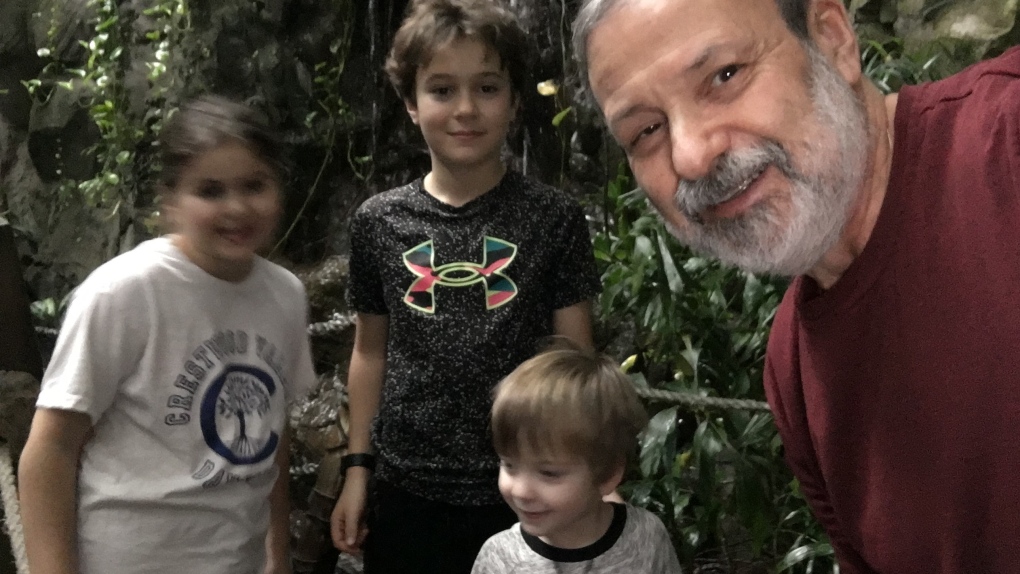 Gary Kapelus, who was an employee at the science centre in the early 1970s, is seen in this photo visiting the science centre with his grandkids. (Submitted)
Gary Kapelus, who was an employee at the science centre in the early 1970s, is seen in this photo visiting the science centre with his grandkids. (Submitted)
He said that while the Van de Graaff Generator, which staff during his tenure called the “hydro show,” has remained a favourite among patrons over the years, he said his go-to spot was the science arcade.
“It was the most fun room. It was just full of hundreds of really interesting exhibits that you could mess around with,” he said.
“There was a little machine… that said, ‘coffee, coffee, coffee,’ like over and over again. And you could change the pitch and you could change things about the speech pattern, but all it said was coffee. We would hang around that thing and we would press the button and we would make it say coffee until everybody was just crazy.”
‘It was my dream come true’
Sixty-four-year-old Elena Wagner, who resided in Thorncliffe Park as a child and young adult in the late 1960s and 1970s, said she became a regular at the science centre shortly after it opened. She said she and her family lived across the street and she liked to take advantage of a museum promotion that offered free admission after 6 p.m. on Fridays.
“I had such a fascination for this static ball,” she said, jokingly referring to herself as a “groupie” of the Van de Graaff Generator.
She said when she was nine years old, a photographer for a community newspaper took a photo of her using the machine and it made the front page.
She said as she stood on the platform in her gold party dress, her long, blonde hair “went up like a Peacock” as soon as she put her hand on the ball.
“I was very nervous but it was my dream come true,” she said. “All I could hear is people laughing and laughing at me.”
When she wasn’t hanging by her favourite exhibit, she said she would stop by the slanted house or the water pump station. In the winter, she said she loved going skating on the frozen fountain in front of the sprawling facility.
Wagner said she can still picture the long escalator ride down to the lower level.
“It was such a beautiful, scenic view,” she said. “It was all windows and you could see the valley and all of the animals.”
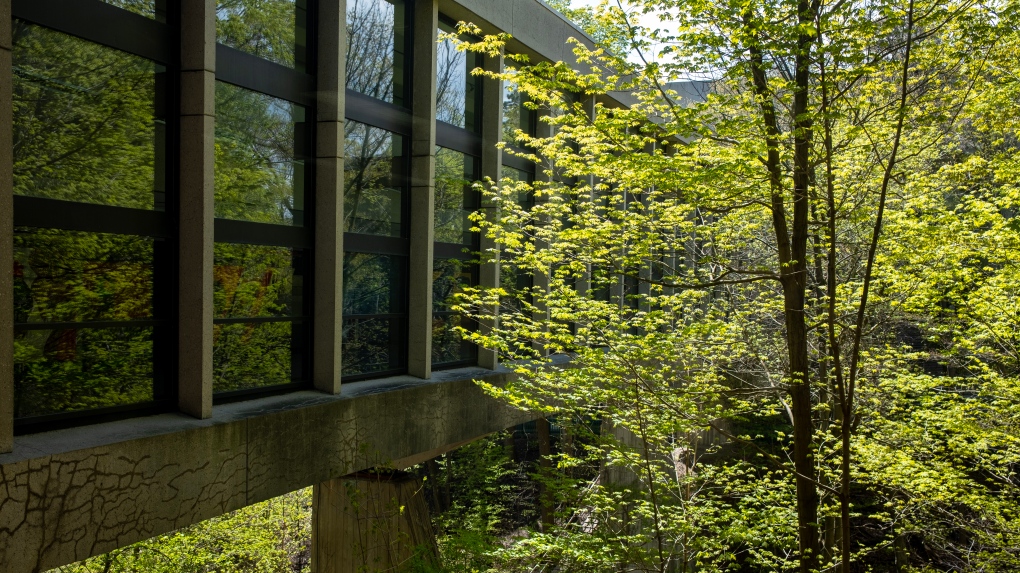 A view of the ravine at the Ontario Science Centre, in Toronto, Friday, May 5, 2023. THE CANADIAN PRESS/Chris Young
A view of the ravine at the Ontario Science Centre, in Toronto, Friday, May 5, 2023. THE CANADIAN PRESS/Chris Young
She said she remembers seeing lineups of cars trying to get into the science centre parking lot.
“I thought, I’m lucky because I just need to walk across the street to go,” she said.
‘Where it all started’
The centre was where Scarborough resident Tiffany Cho says she first fell in love with science. Cho, who now has a PhD in toxicology, said as a child, her many trips to the museum on Don Mills Road sparked her imagination and helped open her eyes to the world of science.
“That was kind of the place where it all started,” Cho said. “Your imagination can just run wild there.”
Years later, when she started to look for a venue for her Star Wars themed wedding, she said the science centre seemed like the perfect fit.
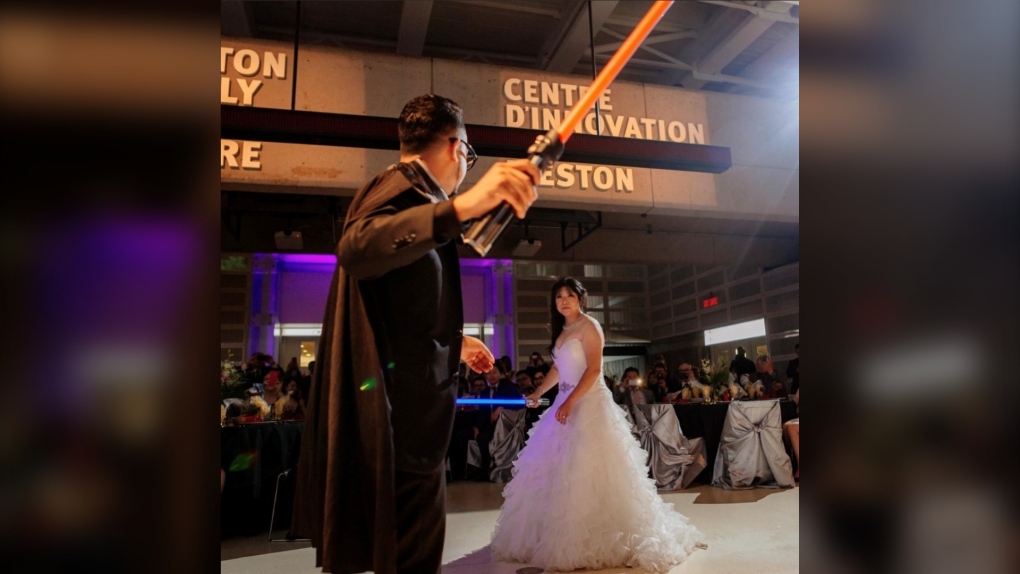 Tiffany Cho and he husband hosted a Star Wars themed wedding at the Ontario Science Centre in 2017/ (Submitted)
Tiffany Cho and he husband hosted a Star Wars themed wedding at the Ontario Science Centre in 2017/ (Submitted)
“The science centre gave us, I think they’re called a scientist leader. So they would help out groups of our guests interact with the different stations and the little things that they had to offer there,” she said. “I thought that was really cool.”
She said her wedding, which was held at the museum back in 2017, was the last time she and many of her guests visited the science centre.
She said that she wished that she had made another trip to the place where her science journey began.
“It kind of helped me carve my career path towards getting my PhD in science and toxicology and then doing educational outreach to kids and other people who are interested in science too,” Cho said.
“I feel sad that the kids nowadays won’t be able to enjoy the same things.”
‘I was just in shock’
Kristina Orsino, a Grade 6 teacher at Canadian Martyrs Catholic School in Newmarket, said her students were among some of the last people to visit the science centre during a field trip last Friday.
“When we got there we didn’t know we were going to be the last class there. We had actually gone through the exhibits and the last part of our day was a presentation and so we did that. And after the presentation, a man came out to me and he said, ‘By the way, you are going to be the last group to ever come to the science centre,’” she said.
“I was just in shock because I just didn’t realize it was going to be closing in two hours for good,” she said.
Orsino said for some of her students, it was the first time they had ever been to the museum.
“They loved it. They had a lot of fun there,” she said.
“When I told them (it was closing), they couldn’t believe it. Some of them had never visited. They were so happy that they went to go see it.”
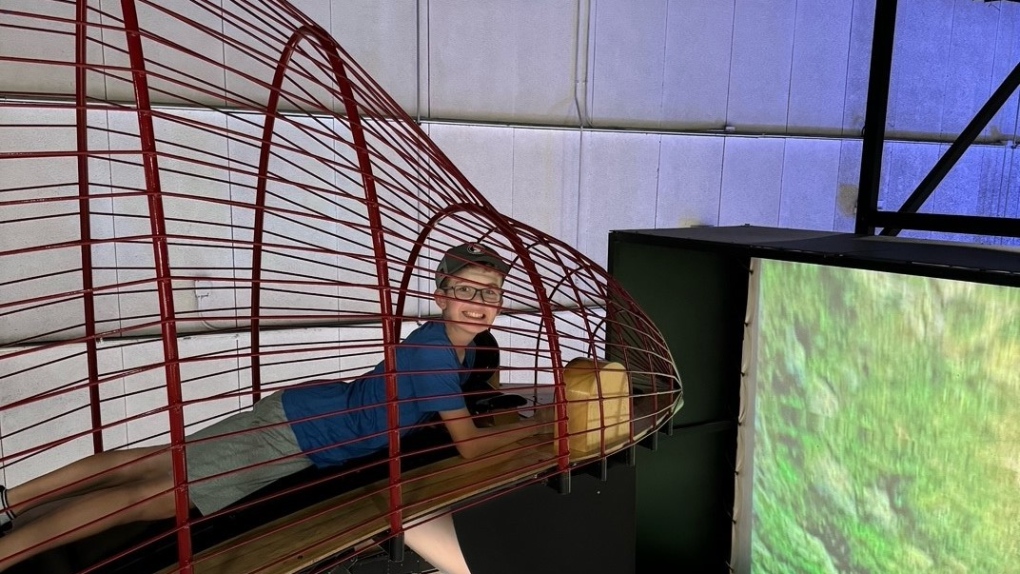 Kristina Orsino, a Grade 6 teacher at Canadian Martyrs Catholic School in Newmarket, said her students were among some of the last people to visit the science centre during a field trip on June 21, 2024.
Kristina Orsino, a Grade 6 teacher at Canadian Martyrs Catholic School in Newmarket, said her students were among some of the last people to visit the science centre during a field trip on June 21, 2024.
She said in hindsight, the employee who did the last presentation for the class seemed “really enthusiastic.”
“She knew it was going to be her last,” Orsino said.



